Whiteflies are tiny, winged flies that have piercing-sucking mouthparts. They are the most common bugs of indoor plants, gardens, and vegetables. And most often, whitefly infestation occurs on the underside of leaves, so it’s important to know how to control and how to kill whiteflies on houseplants.
Whiteflies are always present in large groups on their host plants. And when shaken a heavily infested plants, these tiny heart-shaped flies will appear in large clouds. It also makes whitefly identification easier.
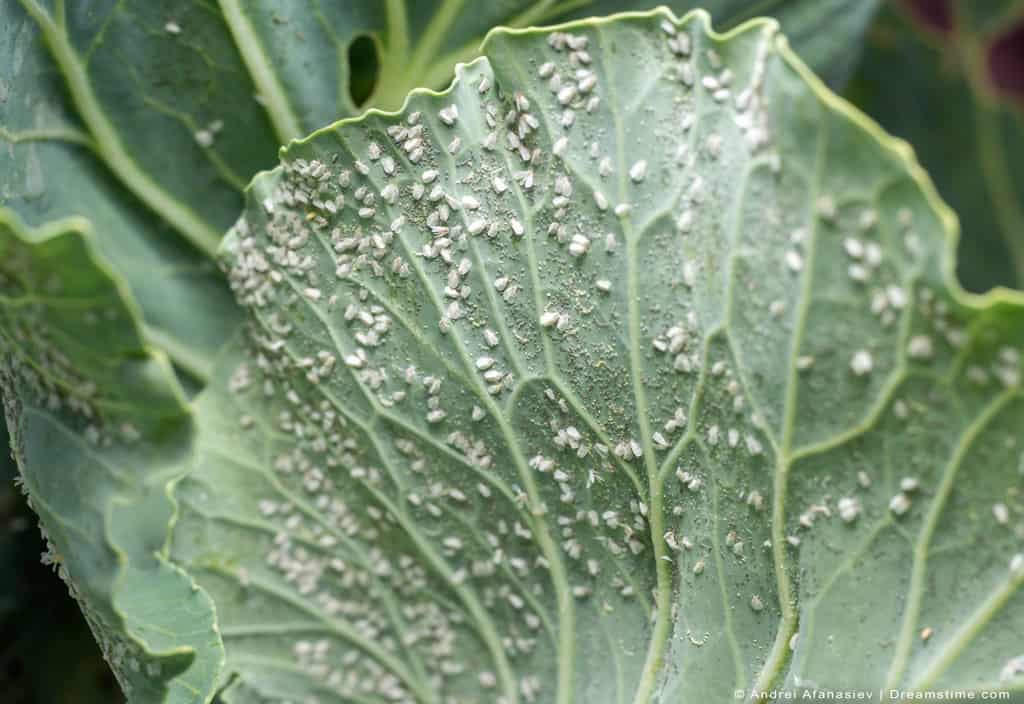
Whiteflies belong to the family Aleyrodidae, including the other sap-sucking insects such as aphids and mealybugs. These insects cause severe damage to their hosts because they suck plant juices. Whiteflies and their nymphs damage new growths in plants and cause yellowing of leaves, reductions in plant production, and stunted growth.
Whitefly infestations on indoor plants and greenhouses are more destructive and remain all year round because the indoor environment provides the whiteflies right conditions for reproduction. The warm temperatures and humidity favor the rapid growth and reproduction of whiteflies.
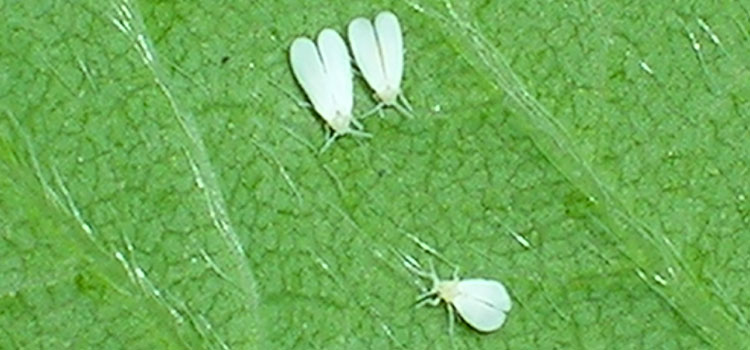
Damage Caused By Whitefly Infestation On Indoor Plants
Whiteflies in indoor environments are noisy, but they cause havoc on houseplants. Whiteflies suck plant juices and weaken them. Furthermore, they secrete sticky substances (honeydew) on the leaves, just like aphids and mealybugs.
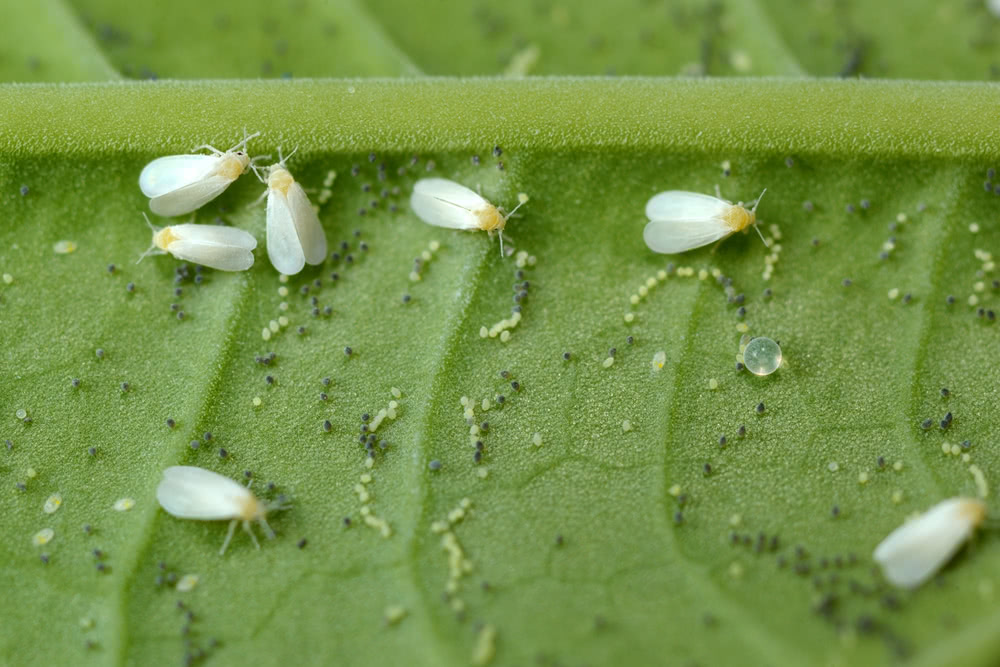
The honeydew secretions attract other pests, such as ants that feed on them. These black ants also protect the whiteflies from damage. Unfortunately, the secretions of sugary material on leaves also increase the chances of fungal diseases such as infections of black sooty mold.
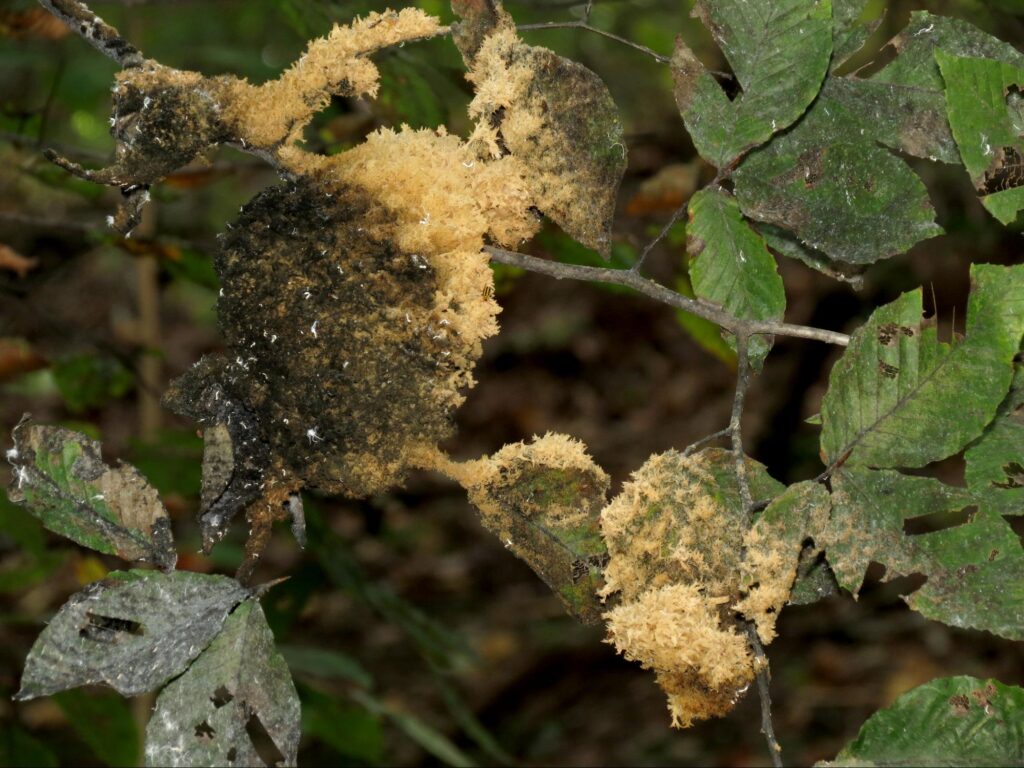
The black sooty mold covers the leaf surfaces and blocks the food-making process (photosynthesis). Whitefly infestation is also responsible for transmitting viral diseases in outdoor and indoor plants.
The damage to indoor plants due to whitefly infestation includes loss in plant strength, curling and falling of leaves, attack of secondary pests, and growth of black sooty mold fungi.
Life Cycle Of Whiteflies
Whiteflies are the insect pests of warm regions. Therefore, they are present indoors throughout the year. The whitefly life cycle consists of four stages: eggs, young crawlers, pupae, and adults.

In outdoor plants, the young nymphs overwinter on the underside of leaves. When the temperature is high during late spring, the adult whiteflies deposit 200 to 400 eggs on the bottom of leaves in clusters or small circles.
The eggs hatch after five to ten days of laying, and the newly hatched crawlers move a short distance from the eggs and start feeding on plant sap (also produce sticky honeydew). During feeding on leaves, the instars undergo 2nd and 3rd stage molt and do not move. The 3rd and 4th stage molts lose their antennas and undergo the non-feeding pupal stage.
After 8 to 10 days, the adult emerges from the shells and repeats the life cycle. The adults are tiny white flies with four wings covered with a white cottony substance. These white insects complete their entire life cycle within twenty-five days. In comparison, adults may live for one to two months.
Due to favorable environmental conditions, the infested greenhouse and houseplants have all stages simultaneously on a single plant.
RELATED: How to Get Rid of Whiteflies in Your Garden and Houseplants?
Identification Of Whiteflies
The occurrence of whiteflies in large clouds makes their identification easier. For example, when the heavily infested plants are bumped or disturbed, the thick crowds of whiteflies emerge from the bottom of the leaves.
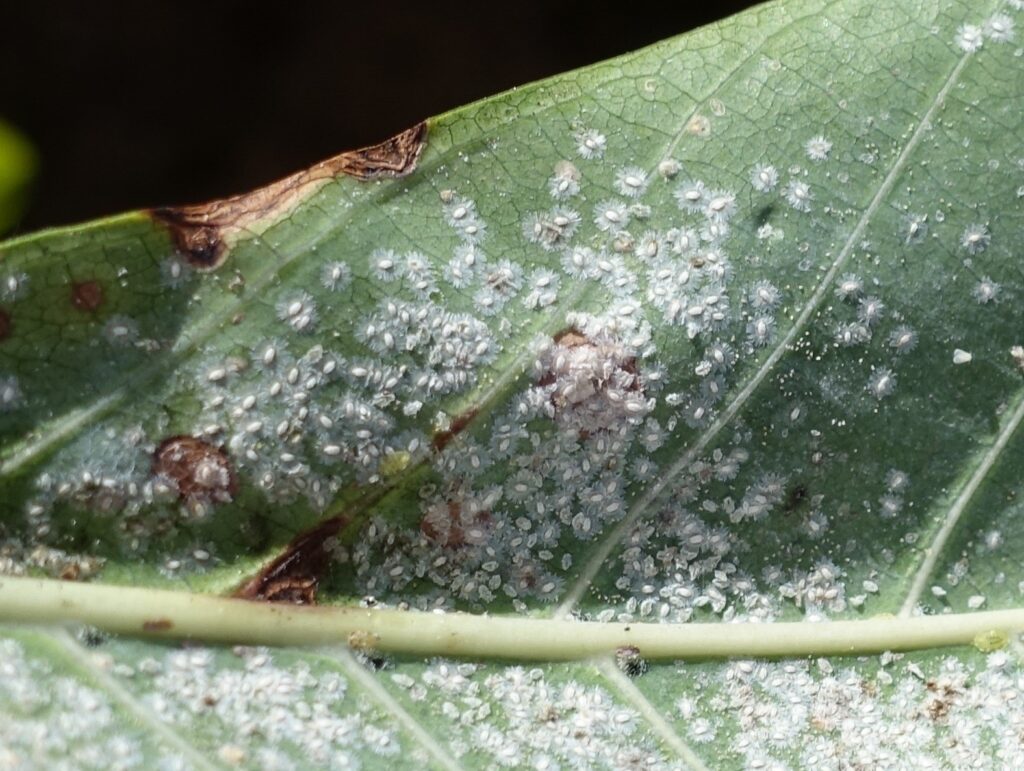
Also, the adults are easy to recognize due to their moth-like appearance. They consist of four white cottony wings, and the whitefly eggs are pale yellow when freshly laid. Later, they turn brown when near to hatch.
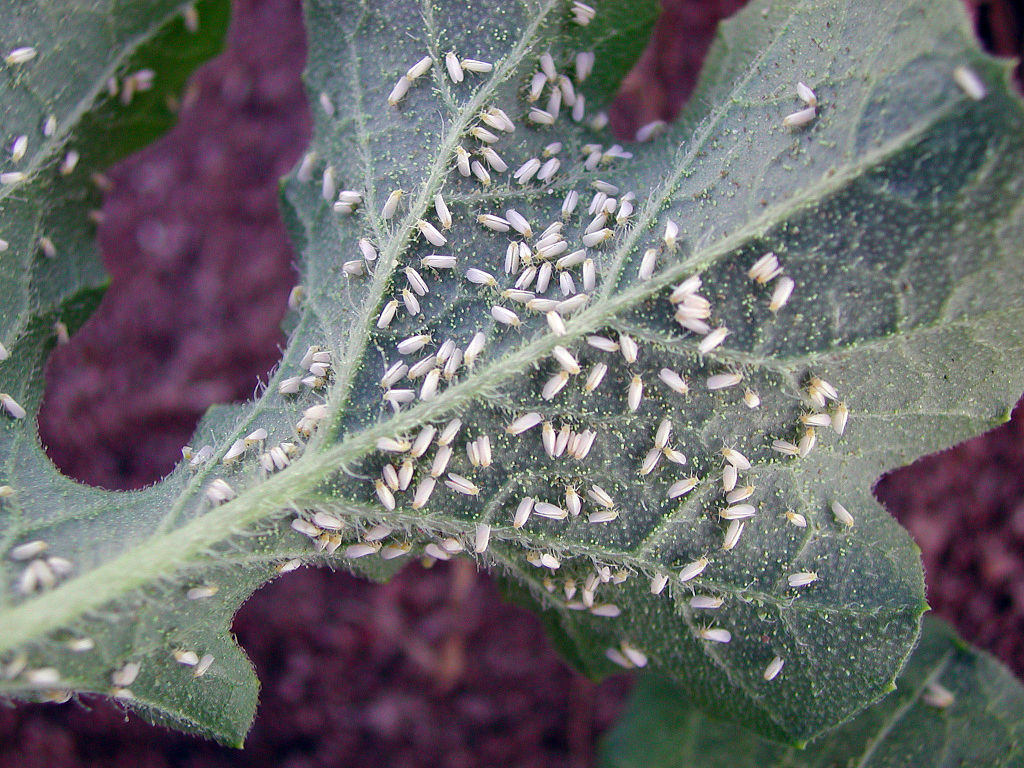
The adult whitefly (male and female) are small, heart-shaped insects and 1.57 mm long. On the other hand, the young crawlers are flat and oval (appear as scale insects). They constantly secrete sticky substances nearby during feeding, attracting black ants and black sooty mold fungi.
The host plants for these whiteflies include ornamental plants, citrus trees, vegetables (tomato, cucumber, squash, potato), poinsettia, and other plants. In the case of ornamental plants, almost 250 species are susceptible plants.

How To Kill Whiteflies With Organic & Inorganic Methods?
Almost 1500 species of this insect are the deadly pest of plants with severe damage. Once the whiteflies are indoors, they turn the plant foliage into yellow, downward curling of leaves, etc.
In addition to that, they also reproduce quickly in indoor environments. Therefore, it is best to get rid of whiteflies as soon as possible or at the first sign of infestation. Because once the presence of these dread plant pests goes unnoticed, then it is much more challenging to control whiteflies.
To control whiteflies, various methods can prove helpful such as organic (prevention, monitoring for insect pests, home DIY spray of water plus vinegar plus sugar, sticky traps, and neem oil spray, use of beneficial insects. At the same time, the inorganic methods involve insecticidal soap spray, the use of pyrethrins, horticultural oils, and mineral oils to get rid of whiteflies.
Careful Inspection Of Plants For Whiteflies
One of the easiest ways to avoid infestations of houseplants by whiteflies at the first sign is the thorough inspection of plants while purchasing. Carefully check the plants, mainly the underside of leaves and make sure there are no adults, eggs, and larvae of whiteflies.
Once the new houseplants are in the home, isolate them for at least one to two weeks and regularly inspect the undersides of foliage. This practice is best to get rid of whiteflies at an early stage.
Use Yellow Sticky Traps To Get Rid Of Whiteflies
The use of yellow sticky traps also comes in organic methods to eliminate whiteflies. And they are helpful in the control and prevention of whitefly damage without harming the natural predators. These traps are successful in both indoors and greenhouses to prevent whiteflies damage.
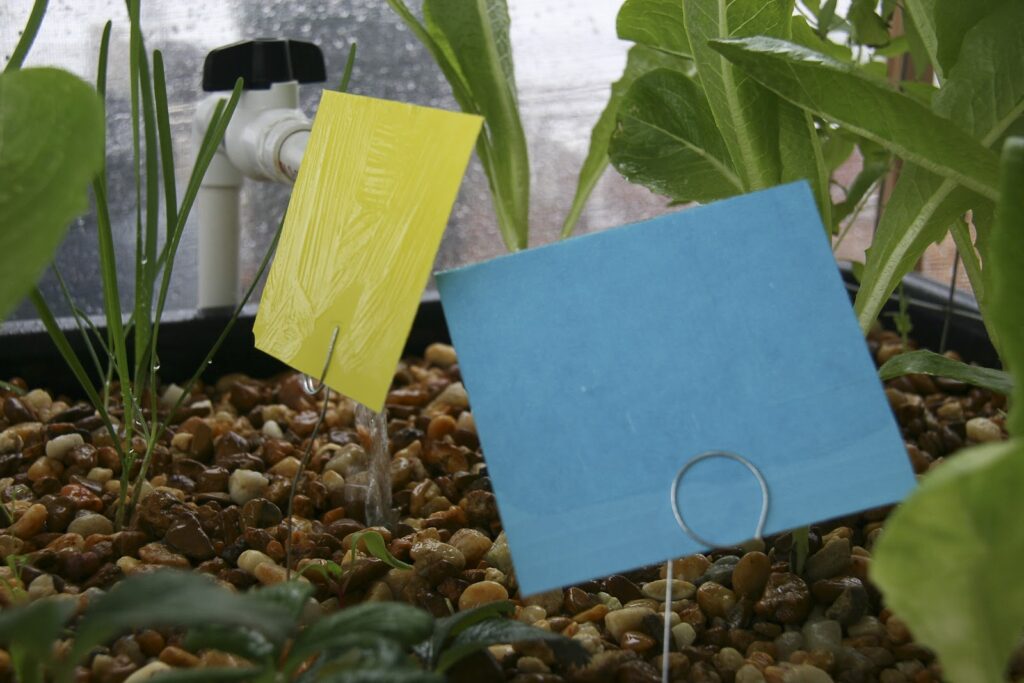
The deployment of sticky traps in or near houseplant pots capture the adults and thus suppresses their population explosions in indoor environments.
Use Bug Blaster To Hose Off Adults And Crawlers Of Whiteflies
Bug blasters also prevent the infestations of giant whitefly in houseplants. For this, simply attach the hook of the bug blaster to the garden hose and thoroughly spray plants with heavy water streams.

To achieve maximum success in whitefly control, keep the spray vertical with a constant sweeping motion. In a heavy pest attack, use a bug blaster every three to five days with no-week intervals.
Like sticky traps, it is the best method to control flying insects with zero involvement of toxic chemicals. It also helps in the maintenance of healthy plants in gardens and indoors.
Use Beneficial Insects To Get Rid Of Whiteflies
The natural predators of whiteflies feed on them and manage their populations in indoor environments, such as ladybugs, green lacewings, adults and larvae, parasitic wasps, and predatory beetles.
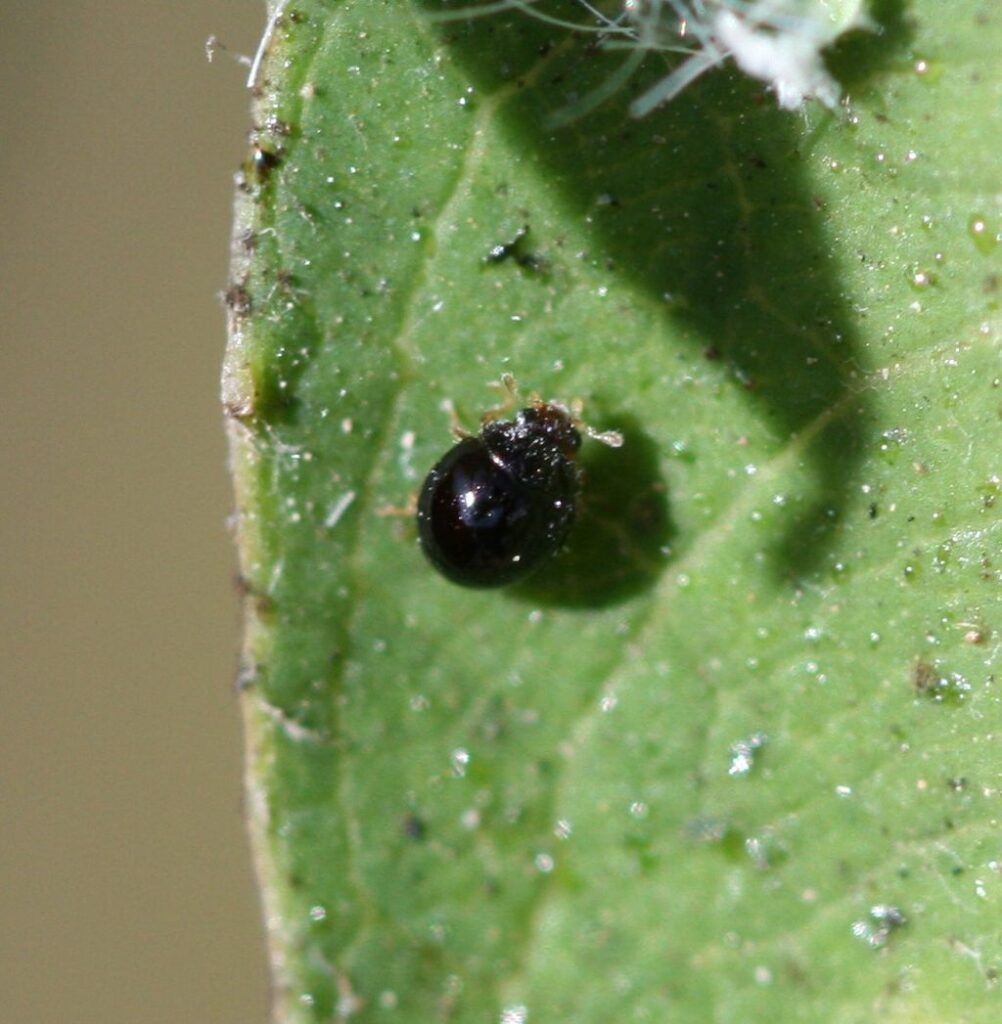

Natural enemies such as ladybugs of whiteflies voraciously feed off the eggs, crawlers, pupae, and adult whiteflies and keep their numbers extremely low. In some cases, these predatory bugs finish them off in indoor environments. For example, the ladybug larvae feast on whitefly larvae and control them before molting into the pupation stage.
It is necessary to have more significant numbers of whiteflies as their food and stimulator to establish the populations of these beneficial bugs in interior spaces. Once the ladybugs are established, they continue to reproduce and control whiteflies.
RELATED: How To Get Rid Of Whiteflies On Houseplants For Good?
Use Insecticidal Soaps To Get Rid Of Whiteflies
The spray of chemical insecticides helps to get rid of whiteflies on houseplants and keep their populations low.
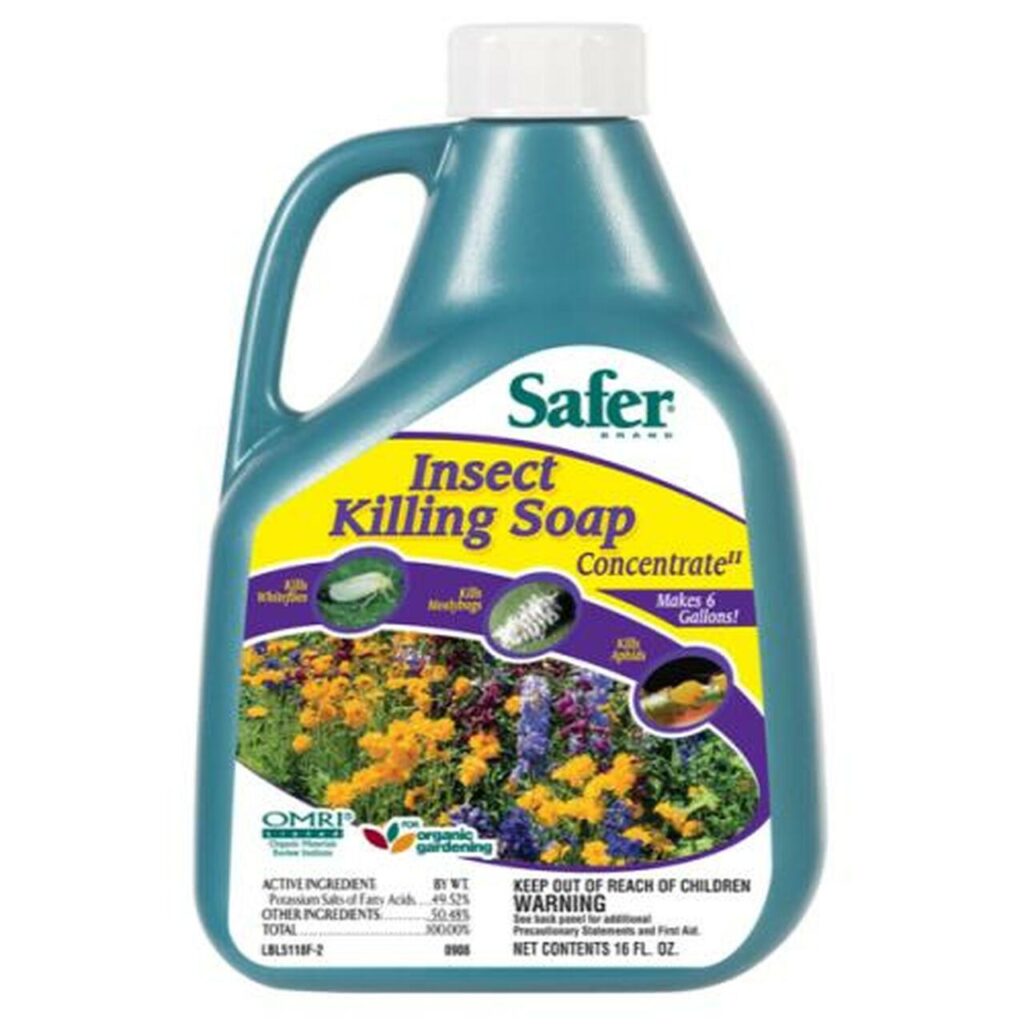
These insecticidal soaps work fast in the killing of indoor pests. And their applications are also safe for indoor environments because of their short persistence.
The spray of insecticidal soap disrupts the hard protecting coverings of the insect body and kills them through dehydration within one hour. Always use it in dilutions because otherwise, it will burn the houseplant foliage. Also, do not apply it during midday when the temperatures are high.
Make a 2.5 oz/ gallon of water dilution and put it in a spray bottle. When whiteflies are present, spray on the plant and apply every 7-10 days.
Use Neem Oil To Kill Whiteflies
Aside from insecticidal soap, neem oil spray is also effective in killing whiteflies.
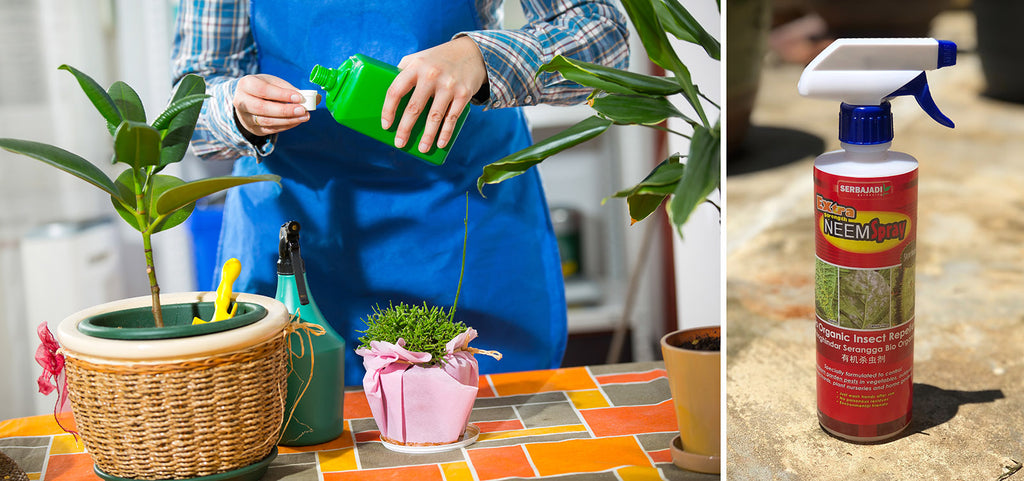
Neem oil spray suffocates the whitefly eggs, larvae, and adults. This spray also controls the whitefly population in the greenhouse and homes by working as an antifeedant.
For effective results and applications, mix two tablespoons of neem oil per gallon of water and spray it in the morning or evening. The neem oil spray works faster and kills whiteflies within an hour.
Benefits Of Neem Oil Spray
It is a broad-spectrum chemical spray that has the following benefits:
- It kills insects, fungi, and mites
- Kills insects at all phases of their life (eggs, larvae, and adults)
- Neem oil spray can control insects throughout the planting season successfully
- Effective for both indoor and outdoor plants
- Do not harm the beneficial insects
Use Of Horticultural Oils To Prevent Whitefly Infestation
Horticultural oils kill whiteflies at all stages of their lifecycle. They work by suffocating and killing the insect and preventing plants from their damage.
Frequently Asked Questions (FAQs)
What Is The Cause Of Whiteflies?
Whiteflies infest houseplants due to the warm temperature of the indoor environment. They also come inside homes due to purchasing and bringing new infested plants. Once these whiteflies are inside, they hide on the underside of leaves, suck plant sap, and reproduce. Therefore, to avoid their infestations on houseplants, it is essential to check the leaves’ undersides thoroughly.
Can Vinegar Be Used As Pesticides For Plants?
Yes, apple cider vinegar is the best and most effective remedy for houseplants. It repels them and protects the plants. It gives new life to leaves, flowers, and houseplants. Mix two cups of apple cider vinegar with two cups of water (one tablespoon of sugar is optional), shake it well and spray on the plant to strongly discourage the landing of harmful bugs.
Are White Flies Active At Night?
They are only active during day time and not at night. However, these are the worst enemies of gardeners, vegetable growers, and houseplant owners. They are the hundreds of species with mostly vegetable and houseplant as their host plants.
Can Whiteflies Survive Without Plants?
Whiteflies can not survive without their host plants, and without them, they will live for merely one week. So this is the best approach to control them simply by removing their host plants. In the absence of food, they will die due to starvation.
Is Neem Oil The Same As Pest Oil?
No, the neem oil and pest oil (horticultural oil) differed in toxicity levels because neem oil is a mixture of many compounds that kills all kinds of plant pests. In addition, the neem oil contains azadirachtin, which is an antifeedant and disruptor of insect hormone systems.
Sources For Further Reading
- Whitefly—Indoors. (n.d.). Missouri Botanical Garden. Retrieved February 23, 2022, from https://www.missouribotanicalgarden.org/gardens-gardening/your-garden/help-for-the-home-gardener/advice-tips-resources/pests-and-problems/insects/whiteflies/whitefly-indoors.aspx
- Planet Natural. (2019, November 12). How to Control Whiteflies. Retrieved February 23, 2022, from https://www.planetnatural.com/pest-problem-solver/houseplant-pests/whitefly-control/
- University of California Agriculture & Natural Resources. (2015, September). Whiteflies Management Guidelines–UC IPM. UC IPM. Retrieved February 23, 2022, from http://ipm.ucanr.edu/PMG/PESTNOTES/pn7401.html
After learning how to kill whiteflies, read our other tips on how to deal with plant bugs:
How to Effectively Control Houseplant Pests?
Common Types of Houseplant Bugs: Who They are & How to Get Rid of Them?







